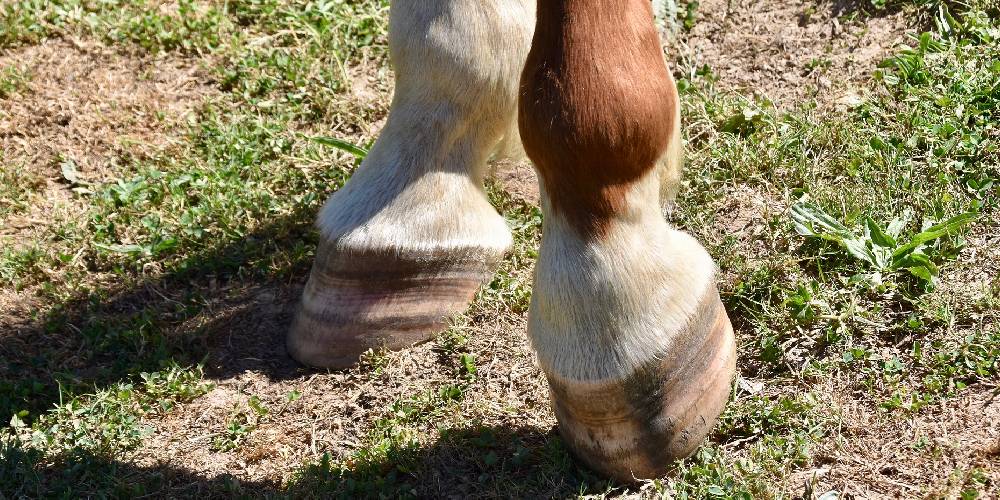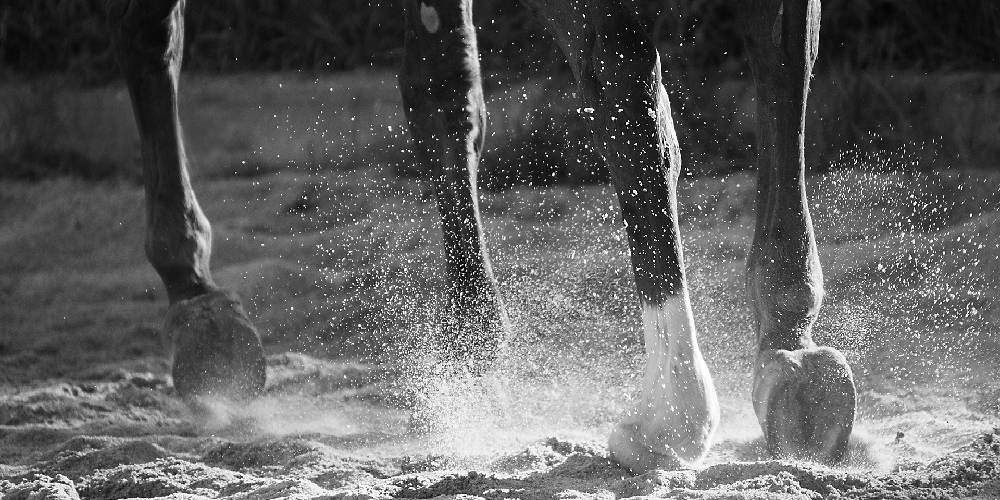Lameness in horses is a serious issue. When I was looking for a horse to buy, one of the first things I was looking out for at the horses I went and looked at was whether or not they were lame or had any other health issues. If there was some lameness that I detected, I immediately turned the horse down. There are a few reasons as to why I didn’t get a lame horse and why you never should consider getting a lame horse. But what does it mean when a horse is lame? And how can you tell if there is lameness in a horse?
In this guide I will cover:
- What is lameness?
- What are some things that might cause lameness?
- How can you tell if a horse is lame?
- How to care for a lame horse
What Is Lameness In Horses?
A lame horse is a horse whose has a sore or injured leg, foot, or joint. Horses will try to favor that leg by resting it or limping. Usually, a horse becomes lame due to an injury on one of their legs. A lame horse should not be ridden or worked as that could further worsen their condition. Sometimes, once a horse becomes lame, it is nearly impossible to bring them back to health from it depending on the severity of the horse’s condition.
What Are Some Things That Might Cause Lameness?

There are so so so many different things that can cause a horse to become lame. Lameness can be cause by something small like a farrier driving a hot nail, or something serious and detrimental like laminitis.
Some of the more serious things that a horse can get that can cause lameness include:
- Laminitis
- Bowed tendons
- Torn ligaments
- Arthritis
- Ring bone
- Hot nails
- White line disease
- Hoof abscesses
- Poor conformation
- Hoof bruising
- Degenerative joint disorders
- Leg & foot wounds
- Bacterial Infections
- Fungal infections
- Hoof cracks
- Bursitis
- Thrush
- Strains
- Sprains
- Stringhalt
There are even more things that can cause a horse to become lame, but these are just a few of the more common causes of lameness in horses.
How Can You Tell If A Horse Is Lame?
A lame horse is fairly easy to identify. Not only do they sometimes appear different than sound horses, but they also move differently as well.
A lame horse will:
- Often rest the leg that is injured. If a horse is lame in the front right leg, they will sometimes favor it and not put any pressure on it when they are standing.
- Lift their head and neck in pain when they step on their lame limb
- Limp when they are moving, especially when trotting
How To Care For A Lame Horse
When a horse is lame, they need to be very well taken care of. The horse’s care all depends on the cause of their lameness. Here are some of the most common causes of lameness and some care tips for these horses:
Thrush
Thrush is a bacterial and fungal infection in the horse’s hoof. It is caused from your horse standing in wet soil and manure for extended periods of time without proper hoof care and cleaning being done.
There are a few things that you can do to stop thrush from reoccurring as well as some things you can do to treat it.
Some things you can do to care for a horse lame from thrush:
- Take them out of their wet and muddy living space and put them in a dry clean one
- Clean their hooves regularly
- Apply a bacteria killer like Thrush Buster or Hooflex to the affected parts of their hooves
- Apply iodine to their hooves to dry them and harden the sole of the hoof
How to stop thrush from reoccurring:
- Ensure the space your horse is living in is clean and dry
- Stay on top of hoof care
- If your horse’s hoof is ever too wet, apply a thrush remedy or iodine to the hoof to help prevent thrush occurring before it even starts.
Laminitis
Laminitis is a chronic condition of the hoof that the horse won’t likely recover from.
This issue is caused when the protective lamina of the hoof swells and the coffin bone of the hoof (main hoof bone) begins to rotate downward. In some extreme cases, the coffin bone will come through the sole of the hoof and the only humane thing from there to do is put the horse out of its misery.
Some things you can do to care for a horse with laminitis include:
- Reduce your horse’s sugar intake to reduce swelling
- Put ice boots on the horse’s lower legs to reduce heat and swelling
- Have your horse housed on sand to help support their hooves
How to prevent laminitis:
- Feed less alfalfa and other hot hays during the summer and use more grass hay
- Don’t overdo it on sugar
- Keep your horse in a healthy amount of exercise

